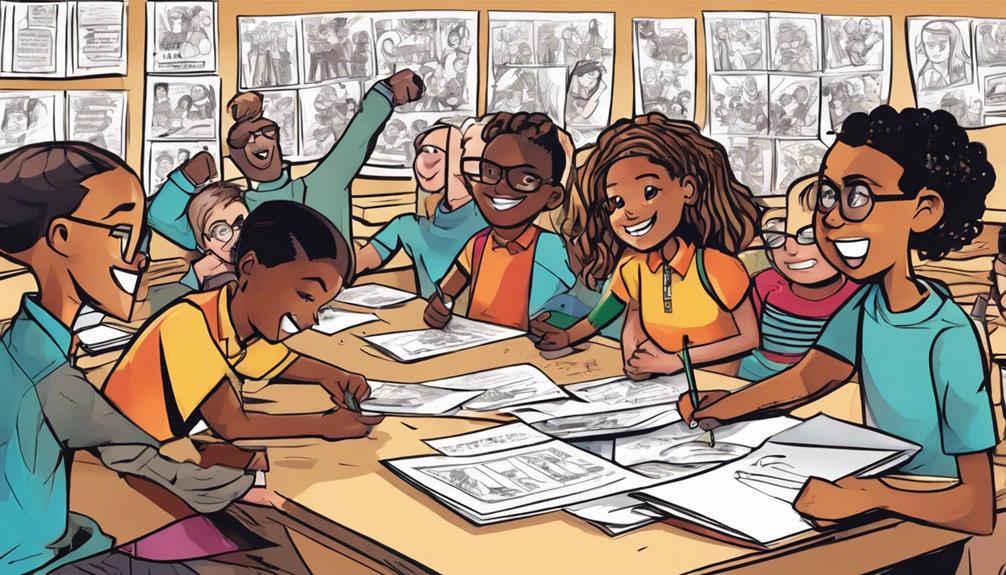To excel in managing your classroom, it is important to find a balance between proactive and reactive strategies. Proactively, establish clear expectations, routines, and connections with your students. Reactively, practice patience, empathy, and try to understand the reasons behind their behavior. Effective techniques to use include active listening, refocusing methods, and creating a calm environment. Engage your students by involving them in creating rules, promoting responsibility and respect. Keep the classes interesting, encourage participation, and establish clear behavior standards. Remember, combining both approaches is key to having a well-managed classroom. Let’s delve deeper into these techniques to further develop your classroom management skills.
Key Takeaways
- Establish clear expectations and routines proactively.
- Build positive relationships with students to prevent behavior issues.
- Respond calmly and empathetically to behavior incidents reactively.
- Use refocusing and calming techniques effectively.
- Empower students through involvement in rule-making.
Proactive Classroom Management Strategies

To effectively manage your classroom and create a positive learning environment, implement proactive classroom management strategies that anticipate and prevent potential issues before they escalate.
One key approach is setting clear expectations from the beginning of the school year. By establishing routines, rules, and consequences early on, students understand what's expected of them, reducing the likelihood of disruptions.
Another proactive strategy is building positive relationships with your students. Take the time to get to know them, show genuine interest in their lives, and provide support when needed. This creates a sense of community and mutual respect in the classroom, making it easier to address issues before they become bigger problems.
Reactive Classroom Management Strategies

Implement effective reactive classroom management strategies by prioritizing patience and empathy in your interactions with students.
When faced with challenging behavior, remember to take a deep breath and approach the situation with a calm demeanor. Avoid reacting impulsively or raising your voice, as this can escalate the issue.
Instead, listen to the student's perspective and try to understand the underlying cause of their behavior. By showing empathy and patience, you create a supportive environment where students feel heard and valued.
Effective Reactive Management Techniques

Prioritizing patience and empathy in your interactions with students is vital to implementing effective reactive management techniques in the classroom. When a situation arises, it's essential to stay calm and listen to your students.
Refrain from reacting impulsively or raising your voice. Instead, use refocusing techniques like clapping patterns to regain students' attention. Keep them engaged with tasks to redirect their focus positively.
Providing a calming space in the classroom can also help de-escalate tensions. Teaching students calming breathing techniques can empower them to manage their emotions effectively.
Effective Teaching Strategies

Maintaining calm and empathetic during classroom interactions is crucial for implementing effective teaching strategies that engage students and prevent behavior issues. To guarantee that your teaching resonates with your students, consider the following strategies:
- Lesson Preparation:
Keep classes engaging and relevant to maintain student focus.
- Building Relationships with Students:
Establish strong connections by learning about your students' interests.
- Utilize Active Learning:
Encourage student participation through interactive activities.
- Provide Clear Expectations:
Set clear guidelines for behavior and academic performance.
Student Involvement in Rule-Making

Engage students in the rule-making process to foster a sense of ownership and responsibility in classroom management. By involving students in creating classroom rules, you empower them to take an active role in maintaining a positive learning environment.
When students have a say in establishing guidelines, they're more likely to understand the reasons behind the rules and adhere to them. This collaborative approach not only promotes mutual respect but also helps students develop decision-making skills and accountability.
Additionally, student-made rules can address specific issues that are relevant to the class, making enforcement easier and more effective. Remember, rules created together are more likely to be embraced and followed enthusiastically by everyone in the classroom.
Frequently Asked Questions
How Can Teachers Effectively Address Diverse Learning Styles in the Classroom?
To effectively address diverse learning styles in the classroom, you can incorporate varied teaching methods, such as visual aids, hands-on activities, and group work. By catering to different learning preferences, you create a more inclusive and engaging learning environment.
What Are Some Non-Verbal Communication Strategies for Managing Student Behavior?
To manage student behavior non-verbally, use proximity by standing near disruptive students, utilize eye contact to convey expectations, and employ hand signals for quick cues. These strategies help maintain a positive learning environment and address behavior promptly.
How Can Teachers Support Students With Special Needs in a Mainstream Classroom?
Support students with special needs by providing individualized accommodations, fostering an inclusive environment, and collaborating with special education professionals. Create personalized learning plans, offer extra support when needed, and celebrate their unique strengths.
What Role Does Teacher Self-Awareness Play in Effective Classroom Management?
To master effective classroom management, your self-awareness is key. Recognize your emotions and triggers to respond thoughtfully. Build relationships, address biases, and adapt to student needs. Stay present, reflective, and open to growth for a harmonious learning environment.
How Can Teachers Handle Conflicts Between Students in a Proactive Manner?
When conflicts arise between students, address them promptly by facilitating open communication, encouraging active listening, and guiding them to find peaceful resolutions. Foster a supportive classroom environment where respect and understanding prevail.
Conclusion
To sum up, mastering classroom management is essential for a successful teaching experience. Did you know that teachers spend an average of 50% of their time managing behavior in the classroom?
By implementing proactive strategies, building strong relationships with students, and employing effective reactive techniques, you can create a positive learning environment that fosters growth and success.
So, remember to stay proactive, stay positive, and always prioritize your well-being as an educator. Happy teaching!










